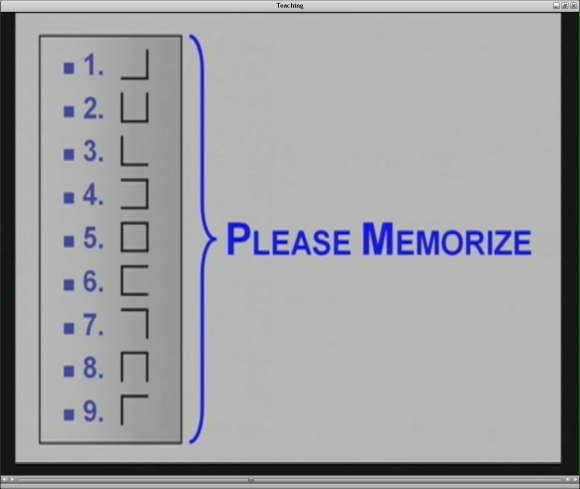Welcome to part 2 of the three-part series on the entertaining and educational Danish short film, “Teaching Teaching & Understanding Understanding” (TT/UU for short, check out part 1 here if you missed it), a synopsis of Dr. John Biggs’ theory of Constructive Alignment. When we left our protagonists, Susan and Robert, they were gamely attempting a Computer Science degree at University to varying levels of success. We had just figured out that what was truly interesting about the situation was not whether Susan or Robert were “good” or “bad” students, or whether their teachers were “good” or “bad”, but what exactly they were learning or understanding. And from there the music sweeps us into an exploration into the word “understanding” – what it is and how you get it.
 Stepping outside of the content for a minute, the video does something pretty cool here. Despite it being a short film without the interactive qualities you might find in a Voicethread or Zaption, the film “activates” the viewer by putting us through a little mind game. It asks us to memorize, in a very short period of time, a list of seemingly random shapes associated with the numbers 1 – 9. It then asks us to translate a 5-digit number into those shapes, by memory. Result: we feel pretty stupid! It then shows us that those shapes are actually reflective of the positions of numbers on a standard telephone key pad. Now we can translate numbers into meaningless shapes till the end of time. Result: we feel pretty smart!
Stepping outside of the content for a minute, the video does something pretty cool here. Despite it being a short film without the interactive qualities you might find in a Voicethread or Zaption, the film “activates” the viewer by putting us through a little mind game. It asks us to memorize, in a very short period of time, a list of seemingly random shapes associated with the numbers 1 – 9. It then asks us to translate a 5-digit number into those shapes, by memory. Result: we feel pretty stupid! It then shows us that those shapes are actually reflective of the positions of numbers on a standard telephone key pad. Now we can translate numbers into meaningless shapes till the end of time. Result: we feel pretty smart!
It’s a very effective, visceral demonstration of how we “activate” understanding: we learn by associating new information with old information, or building on top of old information. Turns out we, as a species, are pretty bad a memorizing random information, only able to hold about seven pieces of information in our short term memory at a time. But if we associate that random information with something known, we’re much better off. Knowledge is constructed as a result of this association, as a result of our activity as learners. This is in direct contrast to the belief that knowledge is constructed through transmission.
But we still haven’t been clear about what we mean by “understanding”. Most folks engaged in assessment are familiar with Bloom’s Taxonomy of Educational Objectives, and at Hunter we’ve been sharing the pared down learning levels “Spit, Synthesize, Speculate”. TT/UU introduces us to Dr. Biggs’ SOLO Taxonomy. These are adorably illustrated in the video through our students’ answering of the question, “What is a cow?”:
| Level | Description | Answer |
| 1 | No understanding/ irrelevant information | “Um…” |
| 2 | Identify, recite, do a procedure | “A cow is when you’re milking” * |
| 3 | Classify, combine, enumerate | “Cows give us milk, and when slaughtered give us oil, meat, fat, bone and leather.” |
| 4 | Relate, compare, analyze | “The essential difference between a Jersey cow and an Angus cow is that a Jersey cow produces a lot more milk but is substantially smaller.” |
| 5 | Generalize, hypothesize, theorize | “Cattle are domesticated ungulates, a member of the subfamily Bovinae. It seems to me that humans must have been the root cause for the diversification of cattle because they were selected for genetic characteristics, like milk, meat, size, color and behavior to name a few.” |
That last was Susan, of course. Levels 4 and 5 are “deep understanding”, where Susan is a natural; 2 and 3 are “surface understanding,” where Robert likes to remain. But how to reach both Robert and Susan? Stay tuned for Danish education humor, part 3!
* I’m a bad parser, but I’m pretty sure this is what he says. It has a certain epistemological charm.



Comments are closed.